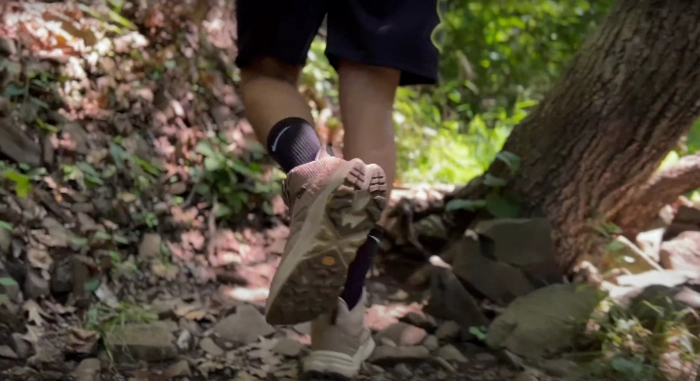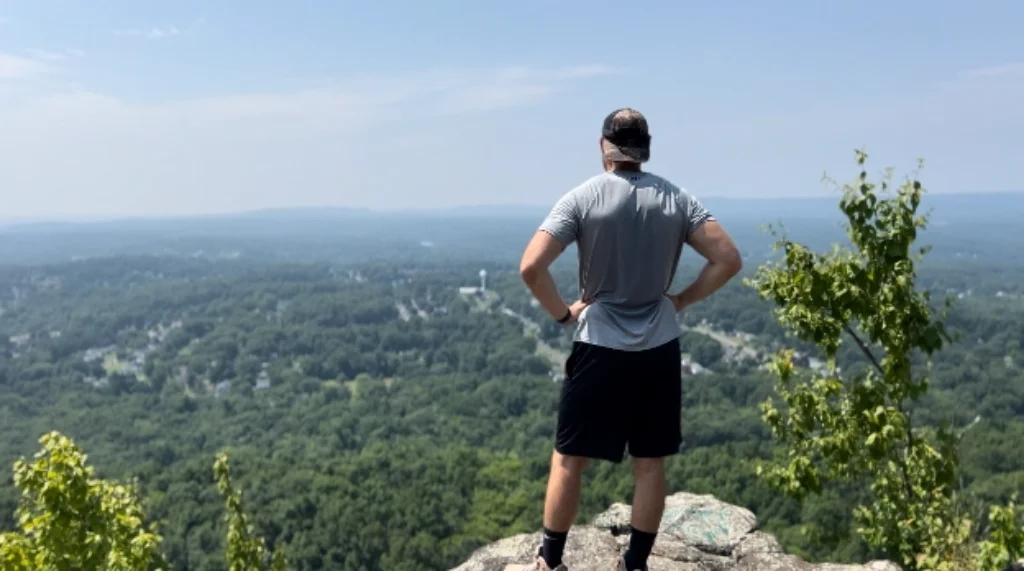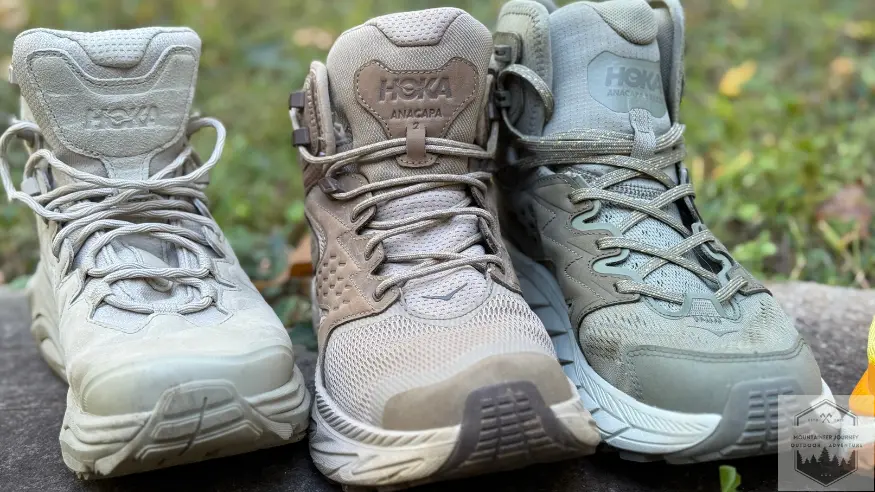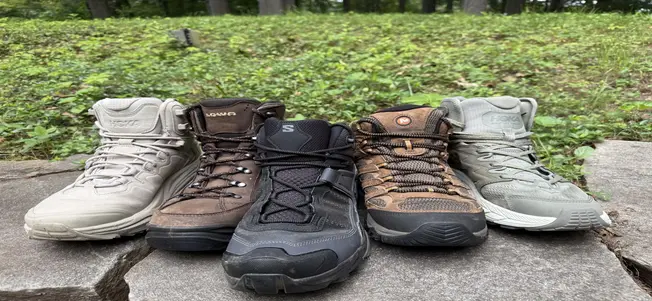What’s An Average Hike Speed? Don’t Miss This Factor

Want to know your average hike speed? knowing this number can make or break your hiking experience. I have ran into countless hikers who have had a bad experience by miscalculating their time, whether it was getting stuck in the dark, being unprepared, or just not conditioned enough knowing your hiking speed and how to calculate it is paramount.
Most hikers average 1.5 to 3.5 miles per hour depending on terrain and fitness. This guide will help you understand what influences this pace and how to plan more efficiently.
Key Takeaways
- Knowing your average speed, typically between 1.5 to 3.5 mph, is crucial for planning your hike and ensuring safety.
- Factors like terrain, elevation changes, weather, pack weight, and fitness level can greatly influence your hiking speed.
- Utilizing tools like GPS devices and fitness apps can help you accurately measure your hiking speed and improve your hiking experience.
Understanding Average Hiking Speed

Grasping the concept of average hiking pace is crucial for hikers when preparing for a fulfilling hike. This hiking pace, usually expressed in miles per hour, can vary widely due to various elements such as topography, climatic conditions, and individual fitness levels.
Being aware of your typical hiking pace is essential to accurately predict journey durations on the trail, organize day hikes efficiently, and ensure safety during your hike.
What is an Average Hiking Speed?
The term average hiking speed denotes the typical rate at which one covers ground on a trail, termed in miles per hour.
The majority of hikers find their speeds falling within a range from 1.5 to 3.5 mph, with an adult hiker maintaining an average pace close to 2 mph typically.
This pace can fluctuate significantly depending upon several variables such as the hiker’s level of experience and fitness as well as external factors including weather and trail conditions that could impact how quickly one completes a hike.
For example, someone new to hiking may progress along trails at a reduced speed due to inexperience whereas seasoned speed hikers are often capable of sustaining much swifter paces even when faced with more demanding terrain. Furthermore, a hiker who is not used to the elements can take their time perusing around the terrain.
Why Knowing Your Speed Matters
Understanding your pace while hiking is crucial for both planning your journey and ensuring safety on the trail. By being aware of how fast you travel, you can calculate the duration it will take to arrive at your endpoint, schedule breaks appropriately, and avoid dangers such as darkness setting in.
Underestimating your speed during a hike could result in unfavorable situations that include straying off course, missing important markers or deadlines along the path, or encountering risky circumstances when night approaches. Trust me, hiking in the dark once the sun goes down can be quite dangerous without the proper equipment.
Tools for Measuring Hiking Speed
With the advancements in modern technology, it’s become quite straightforward to determine your average hiking speed. Equipment such as GPS devices and fitness trackers offer immediate feedback on not only your pace but also the distance you’ve trekked and calories expended.
Mobile applications like Strava, Map My Walk, and Walkmeter Walking & Hiking GPS serve as valuable resources for recording and evaluating how well you do during your hikes.
These instruments are indispensable for more than just keeping an eye on your hiking speed. They play a crucial role in route finding and preparing for outings.
By utilizing these tools, hikers can ensure their trips are both safer and conducted with greater efficiency. For the time being, I am not personally using any of these devices.
Factors Affecting Hiking Speed

Your hiking speed can be affected by numerous variables, including the terrain type and encountered weather conditions.
Being aware of these elements allows you to plan more effectively for your hikes and establish attainable expectations regarding your pace.
Terrain and Trail Conditions
Your hiking pace is largely influenced by the nature of the terrain and the state of the trail. You can usually maintain a quicker speed on flat terrain or, well-kept trails than you could on uneven, stony or slippery routes.
When you are hiking across level ground with good trail conditions, your speed tends to be higher. Conversely, when faced with trails that include substantial elevation gain or lack proper maintenance, your progress is likely to slow down markedly.
Even the slighest elevation gain can tack on several minutes to your hike. What’s great is that apps such as Alltrails will give you an average hike duration based on others who have completed the trail.
Elevation Gain and Loss
Alterations in elevation play a significant role in determining your pace while hiking. The increased exertion and energy needed to ascend slopes can notably decrease your hiking speed. For instance, you may find that on an incline of 5.5 degrees, the speed could reduce from 3 mph down to 2 mph or lower as the gradient becomes steeper. Which can greatly increase your hike time.
In contrast, when going downhill, it is possible for hikers to speed up their speed. Careful attention must be given during descent to prevent any injuries.
Weather Conditions
Your speed while hiking can be significantly affected by the prevailing weather conditions. Inclement weather, including intense rain, snowfall, or elevated temperatures, might impede your progress and lead to increased fatigue, consequently reducing your pace.
Paying close attention to weather predictions prior to and throughout your hike is essential in order to steer clear of severe weather that could jeopardize your safety. See our guide on hiking in the summer to properly prepare for warm weather.
Pack Weight
Your pace while hiking is influenced by the weight of your pack. The heavier your load, the more strain it puts on your body, which can slow you down and diminish your stamina.
By packing only what is necessary and choosing gear that is light in weight, you can enhance both the quality of your hiking journey and increase your speed.
Calculating Your Average Hiking Speed
Determining your hiking speed is crucial for arranging hikes and guaranteeing a pleasurable, secure outing. Various techniques exist to calculate your average hiking speed, each offering distinct benefits.
Manual Calculation
To determine your hiking speed, a basic method is to divide the distance you have hiked by the duration it took. So if you trekked six miles over a period of 3 hours, then your average hiking speed is calculated as two miles per hour. While that is easy and simple, no two trails are the same. As we stated before, the smallest elevation will tack minutes onto your hike. Your average hiking speed will always be evolving over time.
In order to monitor both your total time spent hiking and the extent of ground covered during that time, utilizing a GPS device or compatible mobile application can be quite helpful.
Using Naismith’s Rule
Naismith’s Rule offers a widely-used formula to calculate the time it will take for a hike, taking into account both the distance traveled and the elevation gain. The rule proposes that for every three miles walked, one should allocate an hour, and for each 1,000 feet of elevation gain encountered along the trail, an extra half-hour is added. This is the most accurate way to calculate your hiking speed.
The simplified Naismith’s rule for flat ground, plan for 1 hour each 3 miles. An easy rule of thumb is 20 minues for every mile on FLAT ground.
For example, if your hiking excursion covers six miles and includes ascending 1,000 feet in height above sea level. You can predict that such a trek would last about three hours and thirty minutes according to this estimation guideline.
Improving Your Hiking Speed
Enhancing your performance and enjoying a more efficient hiking experience can be achieved by improving your hiking speed through physical training, packing efficiently, and pacing strategically. Concentrating on these elements will help increase the speed at which you hike.
Strength and Endurance Training
To enhance your hiking pace, it is essential to focus on building muscle strength and cardiovascular endurance through activities such as jogging, trail running, and strength training exercises.
These will help increase your speed while hiking.
Practicing threshold walking by moving at the fastest walk you can sustain for a certain period can improve your stamina. This helps in keeping up a good pace over extended lengths of trail when you are out hiking.
See our extensive guide on how to train for hiking.
Efficient Packing
To keep up a brisk pace while hiking, it’s crucial to pack efficiently. By limiting the weight of your pack to necessities and arranging your equipment effectively, you can noticeably increase your speed on the trail.
Opting for gear that is not only lightweight but also serves multiple purposes helps in minimizing excess and promotes better movement and comfort during the hike.
Pacing and Breaks
It is crucial to sustain a steady pace and ensure you take consistent breaks during hikes in order to avoid exhaustion and boost your hiking speed. Opting for several short pauses rather than a few extended ones can aid in reducing muscle rigidity and preserving stamina. I always notice on long hikes, my legs will begin to lock up and cramp if I take longer than a 15 minute break.
Integrating these periodic brief rests into your hike not only promotes relaxation, but also offers opportunities to savor the environment around you, thereby heightening the pleasure of your outdoor adventure.
Hiking Speed vs Walking Speed
One major error I see most hikers make, is they believe their average hiking speed is around the same as their average walking speed. This couldn’t be further from the truth. The average walking speed is 3 miles per hour or more. Walking surfaces are more flat and have you expend less energy moving through even terrain.
Hiking on the other hand, has several other factors to deal with such as uneven terrain, wet or slick surfaces, heavier footwear, and much more.
One calculation I keep on hand is to reduce my average walking speed by .5 miles per hour if I am on flat terrain while hiking. for example, if my average walking speed is 3.5 miles per hour I will calculate my average hiking speed on flat terrain to be 3 miles per hour. This is not a super precise calculation by any means but a quick rule of thumb.For those who want more information, see hiking vs walking.
Planning Hikes Based on Speed

Taking into account trail conditions and other variables like group dynamics and safety considerations, estimating your hiking speed for an average hike helps you schedule your trek to ensure you complete the planned distance within the time you have.
Estimating Hike Duration
To predict the total duration of a hike, one must consider the overall distance to be covered while factoring in their typical hiking speed and acknowledging any substantial elevation gains that will occur. For instance, if you usually maintain a pace of 2 miles per hour over moderate terrain, this figure should serve as your fundamental reference point for these estimates.
In making precise calculations on how long it will take to complete your hike, employing methods like Naismith’s Rule can prove invaluable.
Adjusting for Group Dynamics
While embarking on a hike with others, it is essential to take into account each individual’s unique speed and ability level. To maintain comfort within the group, allow the least swift hiker to determine the pace.
I like to make quick time adjustments and check in with the members of my group during rest breaks. Remember, if you are going on a trek it’s a journey not a sprint. The last thing you want is to overwhelm one of your group members.
Safety Considerations
When preparing for hiking expeditions, prioritizing safety is paramount. This entails accounting for the amount of daylight remaining to prevent finding oneself off the trail when night falls and staying alert to possible dangers like rough terrain or wildlife encounters. Even pack emergency flashlights as needed if you do encounter nightfall.
Last Considerations
My last consideration is to always over prepare and over calculate your time. What does that mean? over prepare by bringing emergency flashlights, extra clothing etc. Most hikers know, even with a good hiking pace you will run into unknown obstacles that will put a wrinkle in your plan.
Whether it’s rough terrain, weather conditions, or group members , even the most well maintained trails will give you issues. Plan as if you were going to get stuck in nightfall, or run into issues. Being over prepared will always go in your favor and nothing will surprise you.
Frequently Asked Questions
What is a good average hiking speed?
A good average hiking speed is typically around 2-3 miles per hour, but it can change based on the terrain and how heavy your pack is.
How can I measure my hiking speed?
To measure your hiking speed, try using a GPS device, a fitness tracker, or a dedicated mobile app.
Why is it important to know my hiking speed?
Understanding your hiking speed is essential for planning your trip effectively, as it helps you estimate how long your hike will take and ensures you stay safe by avoiding hiking in dim light or adverse weather conditions. Trust me, being stuck under nightfall while you are hiking is not a great situation.
How does elevation gain affect hiking speed?
Elevation gain slows down your hiking speed because climbing uphill demands more energy and effort.
So expect to take longer on steeper trails.
What are some common mistakes to avoid while hiking?
When engaging in hiking, it’s essential not to overstate your ability, neglect the weather predictions, or forgo taking intervals for rest. Failing to do so can culminate in fatigue or harm.
Adventure Awaits,
Tyler






